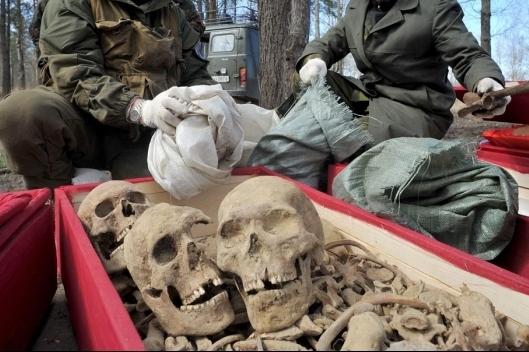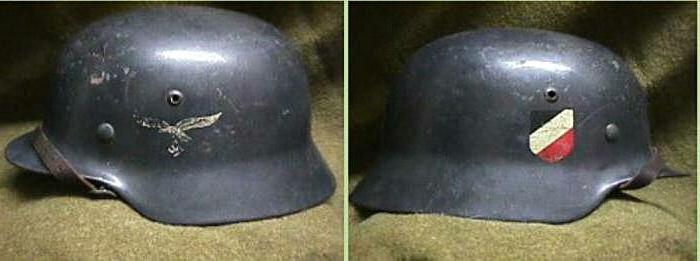"Black" and "white" excavations of World War II
Sixty-eight years ago, the Second World War ended. Excavation continues to this day.

What motivates locals and visitorsfrom a distance of archeologists to take in hand a shovel, going to places of old battles? In most cases, this, alas, is greed. Found artifacts - silent witnesses of someone's lives and deaths - have their market value in our pragmatic age. Excavations of the Second World War have become a vital business.
"Black" diggers are looking for everything that canto represent material value. The most profitable are the remains of the invaders - primarily the Germans, as well as the Romanians, Italians, Spaniards, Hungarians and other representatives of countries that participated in the war against the USSR. This is due to the fact that in their cases sometimes find amusing items of interest to collectors.

What could have happened to a Soviet soldier? In addition to an asterisk in the cap, except, as the song says, "a letter from the mother and a handful of native land." The Red Army did not provide for the mortal medallions, sometimes the soldiers themselves made them, but this was not often, it was considered a bad omen. Excavations of the Second World War in Ukraine, Russia and Belarus, unfortunately, rarely lead to the fact that the identity of the deceased is being clarified, and if this happens, it is usually due to the surviving documents, letters and metal objects on which the owners scraped the name and surname. Often the remains are under a shallow layer of soil, literally in decimeters from the surface.

A special success for diggers is a findjewelry, including SS rings, awards with Nazi symbols, belt buckles, buttons, cockades, knives with imperial eagles. Well go at the auction helmets, flasks and other ammunition.
Informal diggers in the nineties sometimesrestored the "trunks" found in the ground for sale to representatives of the criminal world. Today, this method of weaponry has lost its relevance, a modern pistol or machine costs less.
Excavations of World War II produce both"Black", and "white" archaeologists. Between them there are two main differences: first, the availability of documents confirming the right to prospecting, and secondly, the purpose. Groups created officially look for the remains of soldiers in order to report that one unknown soldier has become less. Things found in this case are transferred to relatives, in memory of the heroically deceased ancestor, except, of course, weapons.

Particular interest is in the historicalaspect combat equipment, usually flooded. In the water area of Odessa Bay not so long ago, the divers discovered the transport three-engine Junkers - Yu-52. Among the things on board is a tablet with topographic maps, to which plans were made for the retreat of German troops. How the destruction of the headquarters aircraft affected the outcome of the liberation operation was to be assessed by historians. Other excavations of World War II are also important: tanks, airplanes, cars, ships. By serial number, stamped on the load-bearing structure, you can use the MO archives to determine who managed this technique.
The mass of the "missing" became a consequencehuge losses incurred by the belligerents in the territory of the USSR. However, the excavations of World War II sometimes open unknown pages of history in North Africa, Europe, and other regions covered by the flames of those years. In 1998, French experts made a statement about the discovery of the plane "Lighting" near Marseilles, on which the famous writer Antoine de Saint-Exupery set off on his last flight.
</ p>




